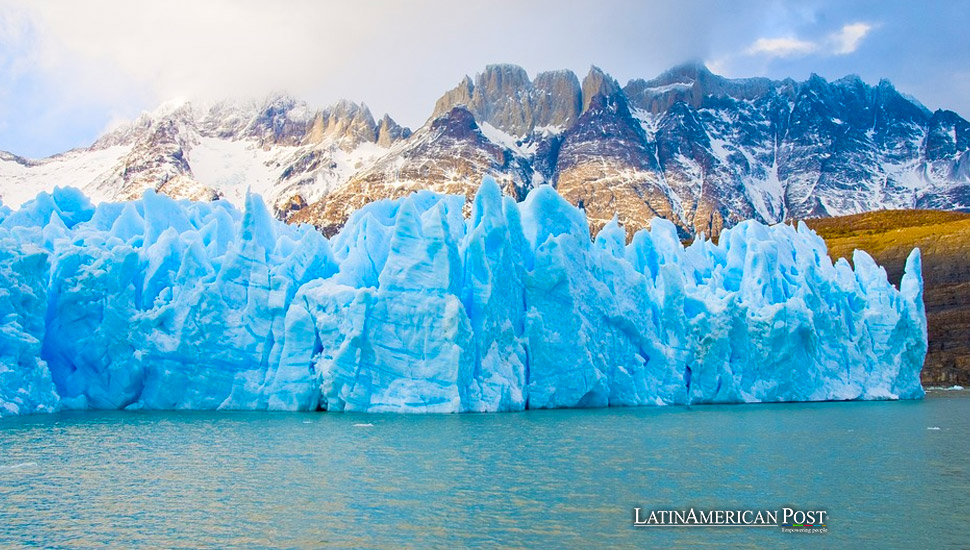Explore Patagonia’s Majestic Landscapes From Glaciers to Hidden Villages

Patagonia, Argentina, is a land of awe-inspiring landscapes and natural wonders. From towering mountains to ancient caves, this region offers a wealth of destinations that every nature lover and adventurer should explore.
Patagonia: A Nature Lover’s Paradise
Patagonia, straddling the southern regions of Argentina and Chile, is one of Earth’s most dramatic and diverse landscapes. Known for its untamed wilderness, Patagonia offers an array of natural wonders, from jagged mountain peaks and vast glaciers to verdant forests and serene lakes. The region is a magnet for adventurers, hikers, and wildlife enthusiasts who seek the raw beauty and tranquility of the great outdoors.
Travel Binger recently highlighted 15 stunning landscapes in Patagonia, Argentina, showcasing the region’s unparalleled beauty and myriad experiences. This feature delves into these must-see destinations, each a testament to Patagonia’s natural splendor.
1. Bariloche: The Switzerland of Argentina
Nestled in the northern part of Patagonia, Bariloche is often referred to as the “Switzerland of Argentina.” With its charming Swiss-style architecture, including sloping roofs and cobblestone streets, Bariloche is a delightful blend of European charm and South American wilderness. This bustling town is more than just a gateway to the Patagonian wilderness; it’s a destination in its own right.
Bariloche’s appeal extends year-round. In winter, it transforms into a haven for skiers and snowboarders, with the slopes of Cerro Catedral offering some of South America’s best winter sports opportunities. The town is a base for exploring the mountains and lakes in warmer months. The Refugio Frey trek is a highlight, leading hikers to the serene Laguna Toncek and offering stunning views of Cerro Catedral.
2. Nahuel Huapi National Park: A Natural Wonderland
Just a short drive from Bariloche lies Nahuel Huapi National Park, one of Argentina’s oldest and most beloved national parks. Covering an area of 2,720 square miles, the park is a mosaic of lakes, forests, and mountains anchored by the majestic Nahuel Huapi Lake. The park’s diverse landscapes make it a paradise for outdoor enthusiasts.
The Arrayanes Forest, located within the park, is home to ancient trees between 300 and 600 years old. With their cinnamon-colored bark, these unique trees are a sight to behold. For a more immersive experience, visitors can take guided tours or explore the park by car to fully appreciate its vastness and natural beauty.
3. Llao Llao Peninsula: Scenic Vistas and Outdoor Adventures
The Llao Llao Peninsula, just 30 minutes from Bariloche, is a favorite destination for locals and tourists. The area offers some of the most spectacular views in the Andean Lake District, particularly from Cerro Campanario, which a scenic cable car ride can reach. Visitors are treated to panoramic views of the surrounding lakes and mountains from the summit.
The peninsula is also a hub for outdoor activities. Biking along Circuito Chico is a popular way to explore the area. At the same time, Cerveceria Patagonia provides a perfect spot to relax and enjoy the local culture with a cold beer in hand.
4. El Chaltén: Argentina’s Trekking Capital
El Chaltén, located in the Santa Cruz Province, is often called Argentina’s trekking capital. This small town, with a population of just over 1,600, is a gateway to some of Patagonia’s most iconic hiking routes. Despite its size, El Chaltén offers all the amenities needed for an outdoor adventure, including lodgings, food, and gear rentals.
Numerous trails surround the town, each offering stunning views of the Patagonian landscape. The Loma del Pliegue Tumbado is a less-traveled but equally breathtaking trail that rewards hikers with panoramic views of the surrounding mountains and valleys.
5. Mount Fitz Roy: A Hiker’s Dream
Towering over the landscape near El Chaltén is Mount Fitz Roy, one of Patagonia’s most iconic peaks. Also known as Cerro Fitz Roy, this mountain reaches an impressive height of 11,171 feet (3,405 meters) and is visible from miles around. The most popular way to experience the majesty of Fitz Roy is by hiking the Laguna de los Tres trail, a 15-mile trek that takes hikers through forests, streams, and up to the base of the mountain.
The final stretch of the hike is steep and challenging, but the reward is a breathtaking view of Mount Fitz Roy reflected in the clear waters of Laguna de los Tres. This is a must-do trek for anyone visiting Patagonia.
6. Cerro Torre: A Challenge for Climbers
Cerro Torre, another of Patagonia’s legendary peaks, is a formidable challenge even for experienced climbers. Its steep, pointed shape and unpredictable weather conditions make it one of the most challenging mountain climbers. Cerro Torre offers a thrilling ascent for those seeking adventure, though it’s advisable to undertake the climb with an experienced guide.
For those not looking to scale the peak, a trek to the base of Cerro Torre still offers incredible views and the chance to witness one of Patagonia’s most dramatic landscapes. Nearby Viedma Glacier provides another opportunity to experience the region’s glacial wonders.
7. Los Glaciares National Park: A UNESCO World Heritage Site
Los Glaciares National Park, established in 1937, is one of Argentina’s premier natural attractions and a UNESCO World Heritage Site. The park is home to some of Patagonia’s most famous glaciers, including Perito Moreno, which is known for its accessibility and stunning ice formations. Visitors can walk along platforms that bring them close to the glacier, offering a rare opportunity to observe the dynamic nature of this icy giant.
The park’s extensive network of trails caters to hikers of all levels, making it an ideal destination for anyone looking to explore Patagonia’s glacial landscapes.
8. El Calafate: Gateway to Glaciers
El Calafate, near Los Glaciares National Park, is the perfect base for exploring Patagonia’s famous glaciers. Just an hour’s drive from the park, it is a charming town that offers visitors a glimpse into Patagonian life. The city is mainly known for its traditional roasted lamb, a culinary experience not to be missed.
While Perito Moreno is the star attraction, El Calafate’s proximity to Lago Argentino and other natural wonders makes it a worthwhile stop on any Patagonian itinerary.
9. Ushuaia: The End of the World
Ushuaia, the southernmost city in the world, is often called the “end of the world.” This historic town, once a penal colony, is now a bustling hub for tourists heading to Antarctica. Ushuaia’s unique location and rich history make it a fascinating destination.
The Tierra del Fuego National Park, located near Ushuaia, offers a variety of hiking trails, including a trek to Glaciar Martial. For those interested in history, the town’s museums provide insights into its past as a prison colony and its role in maritime exploration.
10. Punta Tombo: A Wildlife Sanctuary
Punta Tombo, located on Argentina’s Atlantic coast, is a haven for wildlife enthusiasts. The sanctuary is home to the largest Magellanic penguin colony outside of Antarctica. Visitors can walk along designated pathways to observe these charming birds up close, particularly during the breeding season from September to April.
In addition to penguins, Punta Tombo’s waters are frequented by sea lions, orcas, and cormorants, making it a must-visit destination for wildlife lovers.
11. The Valdés Peninsula: A UNESCO World Heritage Site
The Valdés Peninsula, another UNESCO World Heritage Site, is renowned for its stunning landscapes and rich biodiversity. The peninsula is one of the best places in the world to observe southern right whales, which migrate to the area to breed between June and November. In addition to whales, visitors can see elephant seals, Magellanic penguins, and other native wildlife.
The Valdés Peninsula’s unique combination of wildlife and natural beauty makes it one of Patagonia’s most treasured destinations.
12. El Bolsón: An Artistic Retreat
El Bolsón, a small town in the province of Rio Negro, is a hidden gem in Patagonia. Known for its artistic community and natural beauty, El Bolsón offers a peaceful retreat for travelers looking to escape the crowds. The town is surrounded by fruit orchards and the stunning Lago Puelo, where visitors can enjoy water activities like paddleboarding and kayaking.
El Bolsón’s vibrant arts and crafts scene is another draw, with local markets offering handmade goods and unique souvenirs. The town’s laid-back atmosphere and creative energy make it a perfect spot for relaxation and exploration.
13. The Welsh Villages: A Slice of History
The Welsh Villages of Patagonia, located in the Chubut Province, are a testament to the region’s rich cultural heritage. Gaiman and Trelew, towns founded by Welsh settlers in 1865, are centers of Welsh-Argentine culture. Visitors to these villages can experience a unique blend of Welsh and Argentine traditions, from tea houses serving Welsh cakes to festivals celebrating the town’s history.
The residents of these villages often speak Welsh, Spanish, and English, making it easy for visitors to connect with the local community and learn about the area’s fascinating history.
14. The Cave of Hands: A Window into the Past
The Cave of Hands, or La Cueva de las Manos, is one of Patagonia’s most significant archaeological sites. This UNESCO World Heritage Site features ancient handprints and paintings created by indigenous people over 10,000 years ago. The cave’s walls are adorned with depictions of hands, animals, and hunting scenes, offering a glimpse into the lives of the region’s earliest inhabitants. The Cave of Hands’s artistry and symbolism make it a stunning visual experience and a profoundly moving connection to human history. The site’s preservation as a cultural treasure of humanity adds to its allure, drawing visitors worldwide who wish to witness this ancient masterpiece.
15. Los Antiguos: The Cherry Capital of Patagonia
Located in the northwest corner of Santa Cruz Province, Los Antiguos is a small town nestled along the shores of Lake Buenos Aires, the largest lake in Patagonia. Known as the national capital of cherries, Los Antiguos is famous for its annual Cherry Festival, which takes place in January. This event celebrates the town’s agricultural heritage with music, dance, and abundant cherries.
Beyond the festival, Los Antiguos offers a tranquil retreat for those looking to explore the Patagonian landscape at a slower pace. The town’s proximity to the Cave of Hands makes it an ideal base for travelers interested in cultural and natural attractions. Additionally, its location near the Chilean border provides an opportunity to extend the adventure into Chilean Patagonia, where the breathtaking scenery continues.
The Allure of Patagonia
Patagonia, Argentina, is a region of extraordinary beauty and diversity, offering something for every type of traveler. Whether you’re drawn to its towering mountains, expansive glaciers, rich cultural history, or vibrant wildlife, Patagonia promises an unforgettable experience. The landscapes highlighted by Travel Binger are just a glimpse into what this vast and varied region has to offer.
For nature lovers, adventurers, and those seeking a deep connection with the earth’s most remote and pristine environments, Patagonia is a destination like no other. From the Swiss-like charm of Bariloche to the ancient mysteries of the Cave of Hands, each location within this remarkable region invites exploration and discovery.
Also read: Brazil’s Beachfront Paradise: A Guide to Florianopolis
As you plan your journey to Patagonia, consider the breadth of experiences available—from challenging treks and wildlife encounters to cultural immersion and historical exploration. Patagonia is a place to visit, experience, connect with nature, and reflect on our planet’s profound beauty.





